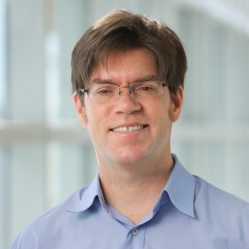The ocean is a highly complex, multiscale system, with many types of motions occurring simultaneously. Ocean turbulence between 1km and hundreds of kilometers (the *submesoscale* and *mesoscale*) contains about 90% of the kinetic energy of the ocean, and is crucial for understanding the vertical and horizontal transport of heat, salt, carbon, and microorgamisms; and for understanding the coupling between the ocean and atmosphere. At these scales, internal waves driven by tides and wind also propagate through the ocean and play an important role in mixing such quantities. Characterizing and disentangling these different classes dynamics, and understanding how they interact, is a central problem in physical oceanography. This has become particularly salient with the December 2022 launch of the Surface Water and OceanTopography (SWOT) satellite, which will observe the ocean from space with unprecedented resolution.
Typical studies focus on the kinetic energy as a function of physical scale, (the “power spectrum”), to characterize ocean turbulence. However, this is a fairly blunt instrument and requires more precision than is available. Thus, Joern Callies, Assistant Professor for Environmental Science and Engineering at Caltech and Albion Lawrence, Professor of Physics, intend to use high-order statistical tests, inspired by tools used by observational cosmologists, quantum field theorists, and statistical physicists, to study mesoscale and submesoscale ocean dynamics using satellite observations, direct measurements made in the ocean, and numerical modeling. Their proposal, “Higher-order statistics of geostrophic turbulence and internal waves”, for which Professor Lawrence is the PI and Professor Callies is the Co-PI, was just selected for funding by the Physical Oceanography program at NASA. It was one of nine proposals selected out of 40 in 2022.
Professor Lawrence has been a theoretical high energy physicist for over thirty years, and has only recently begun working in climate-related physics problems. He just co-wrote two papers (arxiv.org, arxiv.org) on black holes and quantum gravity. To further help his move into this new field, he was also awarded a Simons Foundation Pivot Fellowship to spend the 2023-24 academic year embedded in Professor Callies’ group at Caltech. Brandeis’ collegial and interdisciplinary environment had a lot to do with the success and fun Professor Lawrence has had to date. This direction of his research was spurred by his involvement in a large multi-department NSF IGERT grant in “Geometry and Dynamics” that ran from 2011-2018; and got a very important boost from a Provost’s Innovation on “Nonequilbrium Statistical Mechanics of the Ocean and Atmosphere” that Lawrence received in 2019.



